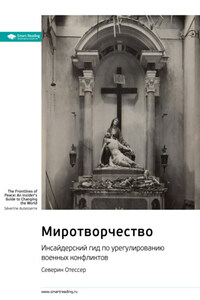The moths of this story â the peppered moths of England â became the most famous insects in the world. You might say they were at the right place at the right time. If you have studied biology in school or college you will have glimpsed them in textbook photographs, posed on tree trunks, immortalized and still as figures in a classical frieze. They were, and still are, hailed as âDarwinâs missing evidenceâ, evolutionâs âprize horseâ, âevolution in actionâ. Yet the history of the peppered moth has lately become a battlefield, the controversy growing more inflamed by the moment. At first glance it is hard to imagine how so much passion, intrigue and even tragedy could attach to the fate of a population of insects.
Under the surface of the bare-bones tale allotted to the peppered moth in every textbook, there lies, like a fading palimpsest, a human story, set in the little-known community of moth collectors. In fact, this unlikely protagonist â a mere moth â has engendered a century of struggle, for, contrary to popular wisdom, Darwinâs theory of natural selection was on shaky ground in the first part of the twentieth century. Apart from admittedly artificial laboratory studies of fruit flies, experimental evidence for Darwinian theory was lacking. There was doubt that natural selection could ever be experimentally demonstrated at all, and if it could not then evolutionary biology was doomed to be a second-rate âhistoricalâ science, incapable of ever being proved or disproved. Fighting against a sea of Lamarckians, saltationists, macromutationists, and ârandom driftâ believers, a resolute band of neo-Darwinists sought the perfect example to prove their case.
The man who would deliver this impeccable proof was an unlikely scientific hero. Dr H.B.D. Kettlewell was not a research scientist by training but a medical doctor, a charismatic and volatile amateur lepidopterist. He had been recruited to Oxford by E.B. Ford, famous geneticist, eccentric don, and megalomaniac founder of the Oxford School of Ecological Genetics. By his own lights, Ford had almost single-handedly rescued natural selection from oblivion in the 1920s and 1930s, when convinced Darwinists were few, and throughout his life he headed a scientific coterie with very definite ideas about the way evolution worked. All of these ideas were absorbed by Kettlewell and taken into the field. For this and other reasons, the moths in his experiments, the moths of the photographs, had to support a heavy freight of intellectual baggage.
The night-flying peppered moth, Biston betularia, normally off-white with a freckling of black scales, had been an object of scientific curiosity since Darwinâs own time. In the mid-nineteenth century a dark (âmelanicâ) form of this moth appeared in the industrialized Midlands of the British Isles. These strange black moths thrived and grew more numerous wherever there was factory smoke fouling the atmosphere, and some people began to think that Darwinâs theory of evolution might explain why. Resting against soot-blackened backgrounds the melanic moths were nearly invisible to birds, and so escaped being preyed upon. Thus more of them survived to reproduce. In rural areas, it was just the opposite. There it was the normal, speckled variety of the peppered moth that had the advantage, well camouflaged against the light, lichen-covered tree trunks. In Darwinian language, natural selection favoured the black appearance in the grimy mill towns and the light one in rural, unpolluted woodlands. The camouflaged moths in each case were the âfittestâ, surviving and reproducing in greater numbers than their poorly camouflaged brethren.
For fifty years, this interpretation of industrial melanism, as it was known, was only a theory â until Kettlewell ventured out into the English countryside to prove it in 1953. Here is one textbook summary of his experiments:
In carefully controlled experiments, equal numbers of peppered and melanic moths were released into the countryside where industry was absent. The trunks of the region are covered by lightly colored lichens. After release, observers with binoculars tried to determine the fate of as many moths as possible ⦠Of the 190 moths that were actually observed to be eaten by the birds, 26 were peppered [pale] and 164 were melanic â¦








